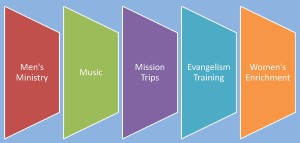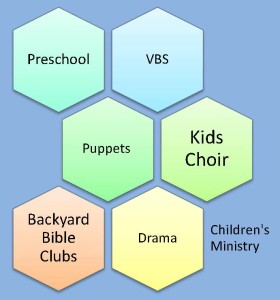by Carol
It’s interesting being in a medium-sized church that has a high proportion of members who have come from much larger churches. I didn’t realize what was driving my expectations and those of other folks in the church until I started writing this post.
A Different Transition
A while back (see 10-30-2015 post, The Twilight Zone of Transition), we noted that volunteers make the difference going from small-sized church to medium. The transition from medium to large, though, can be uniquely difficult to maneuver. Members of the congregation, including volunteers, struggle to adjust their relationship to the lead pastor. While members of the small church expect direct access to the pastor, members in the larger church understand that the pastor can’t do everything. As the church adds paid pastoral staff, members look to the staff for matters within their areas of responsibility.
Half & Half in Medium
In our medium-sized church, I get the best (and worst) of both worlds! Folks who have been with the church since it was small go directly to the pastor with their questions and concerns. Folks who came from larger churches come to me, expecting me to know everything and expecting me to have the ability to make adjustments. They are familiar with going to the staff member instead of the pastor.
As a volunteer myself, though, I am frequently out of the “staff” loop and can’t make the adjustments. We are a medium church — so I got the title, but no office or day-to-day communication with the pastor. (Let’s just say that I like the ministry, and I knew what I was getting into.) Nevertheless, the expectation is there.
Armed with this new insight, I can revise my expectations. We live in a fuzzy area, where some members will go to the pastor and some will go to the pastoral staff responsible for the program. Neither way is wrong in the medium church. But what about the large church?
Transition to Large
As the church continues to grow, members need to learn to look to the staff members instead of going to the lead pastor. It is becoming an Acts 6 situation, protecting his time to lead the church and prepare sermons. And, of course, the church will probably hire a paid staff member to take my position to the next level (1 Timothy 5:18).
Take-aways
We could say that communication becomes critical during this transition — which is true. But even more, leaders and other volunteers need to be flexible and tolerant. Medium churches can do things that won’t fly in the large church. Until it is a large church (and everyone in the church thinks like large-church members), there will be differences of opinion of how things ought to be done.
If you want the medium church to become a large church, let people learn and grow into the structure. If you want to be sure that your medium church will never become a large church, be rigid and intolerant, insisting that everything be done the way that the large churches do it.


